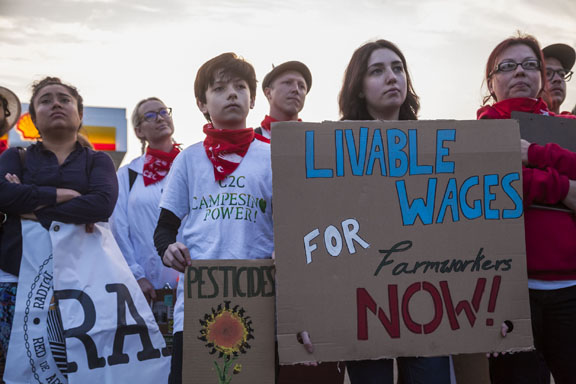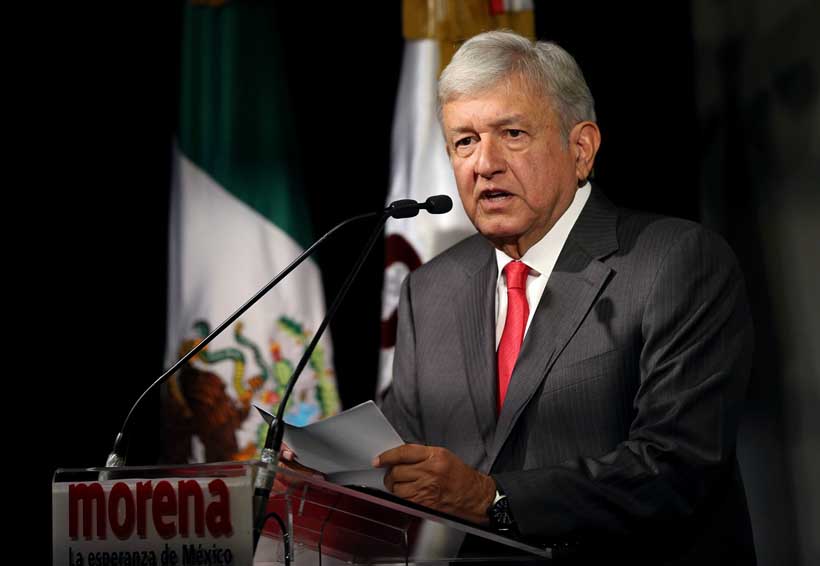El dinero irá directamente a la gente en lugar de a los bolsillos de los gobernadores
por Mexico News Daily
Reemplazarán a una gran cantidad de funcionarios que cada secretaría federal emplea actualmente para distribuir fondos del gobierno y servir de enlace con las autoridades estatales.
Los delegados serán coordinados por Gabriel García Hernández, un senador electo del partido Morena y confidente político durante mucho tiempo de López Obrador.
Luego de reunirse con el presidente electo el sábado, algunos de los delegados designados le dijeron al periódico Reforma que el objetivo del plan es evitar que los fondos públicos ingresen en “los bolsillos de los gobernadores”.
Varios gobernadores estatales han sido acusados de malversación y otras prácticas corruptas en los últimos años, como Javier Duarte en Veracruz, César Duarte en Chihuahua y Roberto Borge en Quintana Roo.
Los delegados tendrán una línea directa de comunicación con López Obrador y coordinarán con las secretarías del gobierno federal.
“What the president asked for is that we hold meetings with the people so that the resources can be used in a participatory budget scheme in which no [state] deputy, mayor or governor can intervene to try to install a construction company [of their choice], determine the project and receive a kickback,” one of the proposed delegates said.
Olga Sánchez Cordero, tapped by the president-elect to be secretary of the interior, said the delegates will manage resources that the federal government, through departments such as the Secretariat of Social Development (Sedesol), has always managed.
However, she explained that the difference will be that “the resources will flow down through a single delegate.”
The prospective officials have been instructed to avoid allowing state government executives to touch the money.
“All the funds for federal projects are not going to be handed over to the states because they usually keep 10 percent or 20 percent of the money . . .” another prospective delegate told Reforma.
“…We’re not plenipotentiary but the resources are going to go directly to the people,” an unidentified member of the future government said.
López Obrador also directed the future delegates to coordinate with the military and other federal security forces and to review registries containing the names of the beneficiaries of different federal programs.
Social program audits have previously found that federal money has been squandered because it went were it shouldn’t have gone, such as dead people.
The Federal Auditor’s Office (ASF) found that Sedesol made support payments to more than 17,000 deceased people in 2016, costing taxpayers almost 66 million pesos, while the federal Agricultural Secretariat (Sagarpa) paid out millions of pesos in farm subsidies the same year to ineligible beneficiaries, including people who had died and civil servants.
López Obrador, who won the July 1 presidential election in a landslide, campaigned heavily on the promise that he would stamp out endemic government corruption.
The incoming government has also announced that it will implement a centralized purchasing system to avoid corruption, while there are also plans to slash the wages of politicians and government officials.
López Obrador and his cabinet will be sworn in on Dec. 1.
Source: Reforma (sp)
In other news in Mexico:
Judge orders investigators reopen case of Tlatlaya massacre
Attorney General’s investigation was neither adequate nor effective
A federal judge has ordered that the Attorney General’s office (PGR) reopen the case of the 2014 Tlatlaya massacre, ruling that the original investigation lacked due diligence.
According to a statement issued by the human rights advocacy group Centro Prodh, Judge Erik Zabalgoitia Novales ruled on May 25 that the investigation carried out by PGR was not exhaustive, adequate or effective, and ordered a series of actions to clarify the case and establish responsibilities.
It remains unclear why it took nearly three months for the order to be made public.
There was evidence from the start of a cover-up in the June 2014 shooting in which soldiers gunned down 22 civilians in a warehouse in the municipality of Tlatlaya, México state. It was initially described as a clash with a group of armed criminals who allegedly opened fire on an army patrol.
The details of what actually happened began to surface after the Associated Press found discrepancies at the crime scene. A witness later confirmed a reporter’s suspicion that the scene had been altered by army personnel.
The National Human rights Commission (CNDH) later determined that between 12 and 15 of the victims did not die in a gunfight, as officials had stated, but were arbitrarily executed.
“Debido a esta investigación defectuosa, hasta la fecha no hay una sola persona que haya sido responsabilizada, ya que [la PGR] no presentó suficiente evidencia para individualizar individualmente a los responsables”, dijo el documento emitido por el Centro Prodh.
“Esta falta de debida diligencia es una de las muchas formas adoptadas por el encubrimiento inaceptable de graves violaciones de derechos humanos en México”, concluyó la declaración.
Fuente: Reforma ( sp ) .










